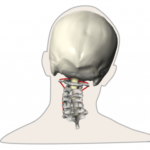Vertebral subluxation (VS) is not a household word, but it should be. That’s because it’s a common situation that has a big effect on the well-being of people of all ages.
Although VS can greatly disturb a person’s life and health, it is the most overlooked of all the important things that should be watched for. Few health care providers have any training to recognize the presence of VS. And while chiropractic offices may provide some information about vertebral subluxations, few people are even aware of it. That’s why we tell people that everyone should have their spines checked for subluxation.
Today someone asked me, “Just what is a vertebral subluxation?” I’m really glad she asked because it provided an opportunity to put together the following answer and share it with others:
“Vertebral subluxation is why chiropractic exists. It’s what happens when a spinal bone becomes misaligned, and insults the nerve system. It’s a little ironic because vertebrae are actually designed to protect the nerve system. When the spinal cord is properly sheltered by the movable bones of the spine, life can be good. If, on the other hand, a vertebra fails in that task, then life can’t possibly be as good. The reason is simple. The brain communicates with and coordinates the function of all other body parts through the nerve system.

Vertebral subluxation at the top of the neck
When messages between the brain and body are interfered with, body tissues still receive signals through the nerves, but they are distorted. Receiving jumbled instructions from the brain causes tissues and organs to function erratically. Some malfunctions produce symptoms, while others might manifest for prolonged periods of time before a person has any idea that something is wrong. Simply stated, vertebral subluxations interfere with life in the body.”
It’s safe to say that life is always better without vertebral subluxations. That’s why so many people make a point of seeing their chiropractor regularly. We know that these subluxations occur when the outside insults of everyday life overcome our internal resistance. There are various ways that can occur and the research suggests that these upsets can happen when a physical, chemical or emotional trauma gets the best of us. It’s easy to understand how being in a car accident, taking a fall, or some other impact can disturb the proper position of a vertebra. But clinical experience has shown that VS also occurs in the presence of emotional upsets, and when injurious chemicals enter the body. Unfortunately, that sometimes includes medications, even though taken with the intention of helping a person. Whether due to high-stress lifestyle, low-quality foods, or just living day to day in this often unnatural environment, VS always interferes with one’s ability to express our fullest potential.
All of this makes it a good idea to get your spine checked, and adjusted if a vertebral subluxation is found to be present.
